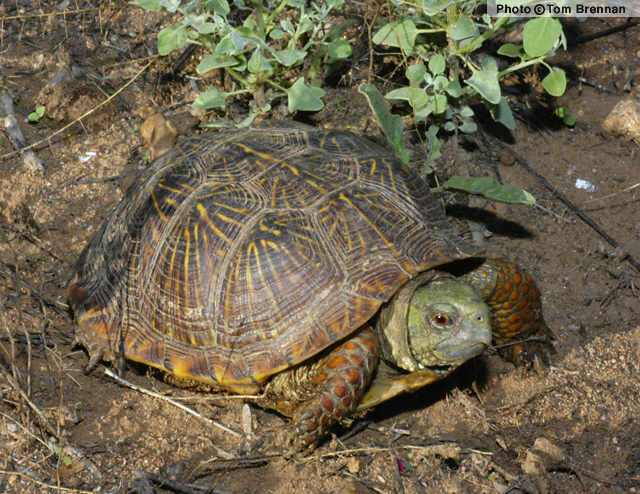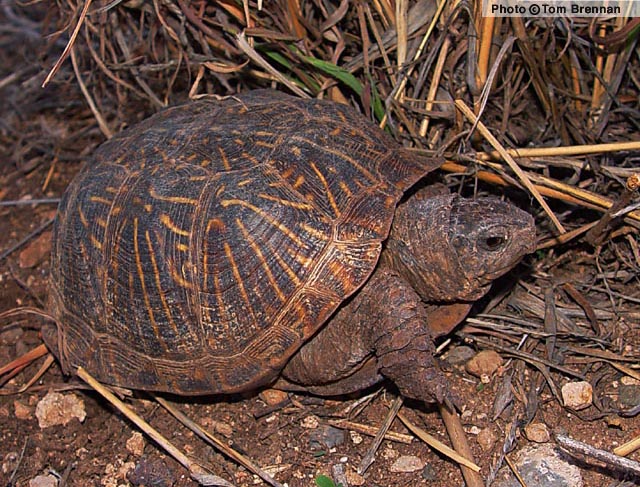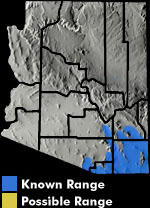Online Field Guide to The Reptiles and Amphibians of Arizona


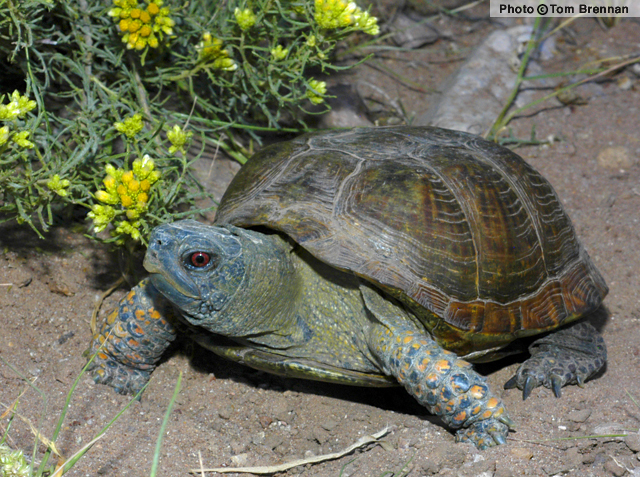
Cochise County, AZ
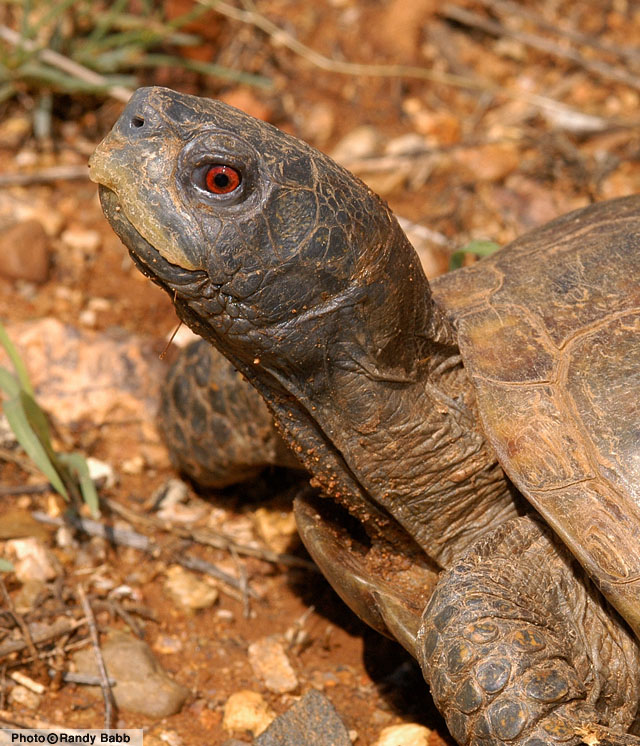 Cochise Co., AZ |
| ORNATE BOX TURTLE Terrapene ornata | |
| DESCRIPTION: A small (shell up to 146 mm or 5.75" in length) land turtle with a high, dome shaped shell marked with radiating yellow lines on a dark background. As the animal ages the shell becomes lighter in color and the yellow lines fade. Older adults often have a plain yellow-brown shell. Adult males usually have red or orange-red irises and the first nail on each hind foot is curled inward. Adult females usually have orange-brown or yellow irises. The bottom of the shell (plastron) is hinged so that it can close like a box around the turtle.
DISTRIBUTION: This turtle is found in the southeastern corner of Arizona where it has been found at elevations ranging from about 2,000′ near Winkelman to over 7,100′ in the Huachuca Mountains. It is most abundant between 3,000′ and 6,500′ in our state. HABITAT: Primarily a turtle of low valleys, plains, and gentle bajadas within Semidesert Grassland and Chihuahuan Desertscrub communities. Also enters Sonoran Desertscrub and Madrean Evergreen Woodland in some areas. Rarely encountered in the lower extremes of Petran Montane Conifer Forest. BEHAVIOR: Primarily diurnal. Often active in the morning or during rainy conditions. Primarily terrestrial but capable of swimming. Often seen wading in shallow puddles. Shelters in self constructed burrows or burrows created by kangaroo rats. Hibernates underground during the cold months of winter and late fall. Can live to over 30 years of age. This slow moving turtle often wanders onto roadways and large numbers of them are killed by vehicles each year.DIET: This omnivorous turtle feeds on beetles, crickets, grasshoppers, other insects, worms, crayfish, reptiles, eggs, carrion, cactus fruit, cactus pads, berries, and other plant material.REPRODUCTION: Mates in spring and fall and buries a clutch of up to 8 eggs in a shallow, moist nest within well drained soil. Females are capable of retaining the eggs until conditions are right for nest building. By Thomas C. Brennan
PROTECTED Brennan, T. C., & A. T. Holycross. 2006. A Field Guide to Amphibians and Reptiles in Arizona. Arizona Game and Fish Department. Phoenix, AZ Brennan, Thomas C., Feldner, M. J., 2003. Terrapene ornate luteola. High Elevation Record. Herpetological Review 34(1). Stebbins, R.C. 1951. Amphibians of Western North America. University of California Press, Berkeley, CA. Stebbins. 1985. Western Reptiles and Amphibians. Houghton Mifflin. New York, NY Stebbins, R.C. 2003. A Field Guide to Western Reptiles and Amphibians, Third Edition. Houghton Mifflin Company, Boston, MA. |
|
Visit Partners in Amphibian and Reptile Conservation:


HOME
Copyright © 2023, Arizona Game and Fish Department. All rights reserved.
If you make use of the textual contents of this site in reports, publications, etc. please cite and credit the author(s) and photographer(s). All photos on this website are copyrighted. However, those found in the species account section may be used for any noncommercial scientific, educational, or conservation purposes provided that photographs are not altered and continue to bear the copyright symbol and name of the photographer. Please contact the photographer regarding commercial use of copyrighted photographs.










